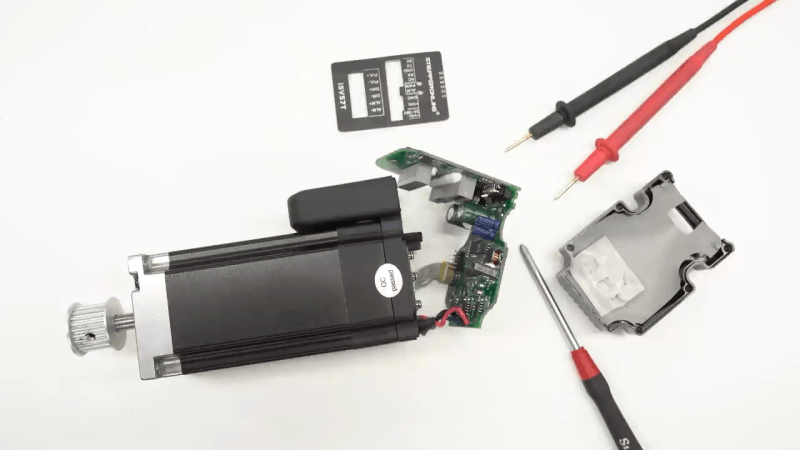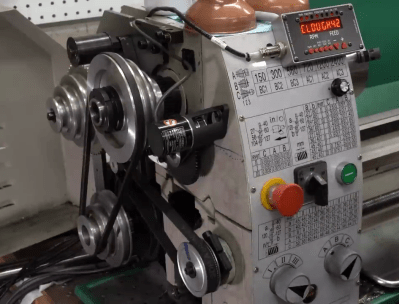

The low-cost servo motor in [Clough42]’s lathe’s electronic leadscrew bit the dust recently, and he did a great job documenting his repair attempts ( see video below the break ). When starting the project a few years ago, he studied a variety of candidate motors, including a ClearPath servo motor from Teknic’s “Stepper Killer” family. While that motor was well suited, [Clough42] picked a significantly lower-cost servo motor from China which he dubbed the “Stepper Killer Killer”.
He does a very thorough post-mortem of the motor’s integrated servo controller, checking the circuits and connections on the interface PCB first. Not finding any obvious problem, he proceeds to the main PCB which contains the microcontroller, motor driver transistors, and power supplies. There is no visible damage, but a check of the logic power supply shows 1.65V where 3.3V is expected. Looking at the board with a smart-phone mounted IR camera, he quickly finds the bad news — the microcontroller has shorted out.
 He doesn’t have access to the control firmware on the STM32, so even if he replaced the MCU, he has no way to make the motor functional again. After briefly considering the ClearPath Stepper Killer once more, he decides to simply replace the motor with another identical one. The Chinese motor is not only cheaper, but the changes he’d have to make to the motor brackets and control software factor significantly in his decision as well.
He doesn’t have access to the control firmware on the STM32, so even if he replaced the MCU, he has no way to make the motor functional again. After briefly considering the ClearPath Stepper Killer once more, he decides to simply replace the motor with another identical one. The Chinese motor is not only cheaper, but the changes he’d have to make to the motor brackets and control software factor significantly in his decision as well.
As one viewer commented, all might not be lost. If the STM32 firmware can be extracted from the new motor, there’s still a chance the old one can be salvaged. We first wrote about this lathe electric leadscrew project a few years ago, and [Clough42] has since made an entire series documenting the modifications and the decisions he made along the way.


